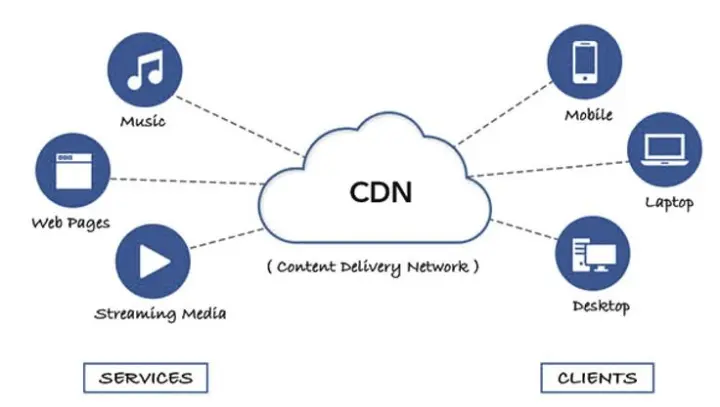In today’s digital landscape, a website’s success does not depend just on sleek design and smooth functionality, but also on its ability to be found. Search Engine Optimization (SEO) is often misunderstood as merely a marketing concern, but in reality, it begins with the foundation of web development. The way a site is structured, coded, and deployed has a profound impact on its visibility in search engines like Google. For developers, understanding SEO means building websites that are not only technically sound but also optimized for discoverability from the ground up.
Web developers hold the keys to a website’s technical health, which directly influences its search rankings. Search engines rely on factors such as page speed, mobile responsiveness, clean code, and proper indexing to determine where a site should rank. A slow, poorly structured website will struggle to gain traction, no matter how compelling its content may be, but, a well-optimized site loads quickly, provides a seamless user experience, and earns higher rankings, leading to more traffic and better conversions.
One of the most fundamental aspects of SEO-friendly development is creating a clean, logical URL structure. Search engines and the users prefer URLs that are descriptive and easy to understand. Instead of dynamic strings filled with parameters, a well-structured URL should clearly indicate the page’s content. Additionally, canonical tags should be implemented to prevent duplicate content issues, ensuring search engines index the correct version of a page.

Semantic HTML is another critical component. Search engines rely on proper markup to interpret a page’s content, so using elements like `<h1>` for main headings, `<article>` for blog posts, and `<nav>` for navigation menus helps crawlers understand the site’s structure. Meta tags, including the title and description, should be concise and keyword-rich without appearing spammy. Structured data takes this a step further by providing search engines with explicit clues about the content, potentially leading to enhanced search results like rich snippets.
Website speed is no longer just a convenience; it’s a ranking signal. Google’s Core Web Vitals measure user experience through metrics like loading performance, interactivity, and visual stability. A slow website frustrates users and increases bounce rates, signaling to search engines that the site may not be valuable.
Developers can optimize performance by minimizing code, compressing images, and using modern formats. Lazy loading ensures that off-screen images and videos only load when needed, reducing initial page weight. Browser caching and Content Delivery Networks (CDNs) further enhance speed by storing static resources closer to users. These optimizations not only improve rankings but also create a smoother experience for visitors.

With mobile devices accounting for over half of global web traffic, Google now prioritizes mobile-first indexing. This means the mobile version of a site is considered the primary version for ranking purposes. Responsive design is the best approach, ensuring a consistent experience across all devices without the need for separate URLs. Touch-friendly buttons, readable fonts, and properly spaced interactive elements are essential for keeping mobile users engaged.
Accessibility also plays a role in SEO. Search engines favor websites that are usable by everyone, including those with disabilities. Simple practices like adding alt text to images, using ARIA labels for interactive elements, and ensuring keyboard navigability not only improve accessibility but also enhance crawlability.
Modern
web applications built with frameworks like  can face SEO
challenges due to heavy reliance on client-side rendering. If search engine
crawlers struggle to parse JavaScript-heavy content, the site may not rank as
well as it should. Solutions like server-side rendering (SSR) and static site
generation (SSG) pre-render pages, making them more accessible to search
engines. Dynamic rendering serving a simplified version of the page to crawlers,
can also be an effective workaround for complex applications.
can face SEO
challenges due to heavy reliance on client-side rendering. If search engine
crawlers struggle to parse JavaScript-heavy content, the site may not rank as
well as it should. Solutions like server-side rendering (SSR) and static site
generation (SSG) pre-render pages, making them more accessible to search
engines. Dynamic rendering serving a simplified version of the page to crawlers,
can also be an effective workaround for complex applications.
Security is no longer optional. Google explicitly favors HTTPS-enabled websites, and browsers warn users when visiting unsecured pages. Migrating to HTTPS and resolving mixed content issues (where insecure resources load on secure pages) is a must for maintaining trust and rankings.
SEO is not a one-time task but an ongoing process. Tools like Google Search Console provide invaluable insights into how search engines view a site, highlighting indexing errors, mobile usability problems, and performance issues. Google Analytics offers a deeper look at user behavior, helping developers and marketers refine their strategies. Regular audits using Lighthouse or third-party tools like SEMrush ensure that the site remains optimized as algorithms evolve.
For web developers, SEO is not just an add-on, it’s a core aspect of building successful websites. By integrating SEO best practices into the development workflow, developers can create sites that rank well, load quickly, and deliver exceptional user experiences. The intersection of clean code, performance optimization, and search-friendly architecture is where great websites experience. In the end, the best sites are not just functional, they’re findable.